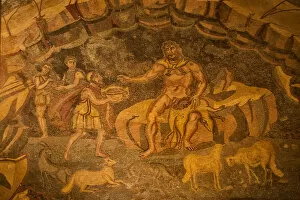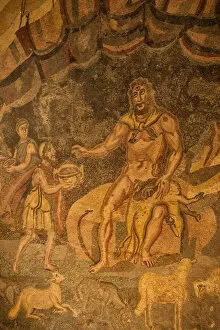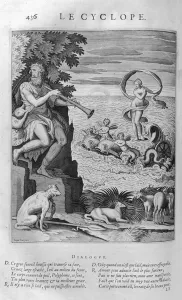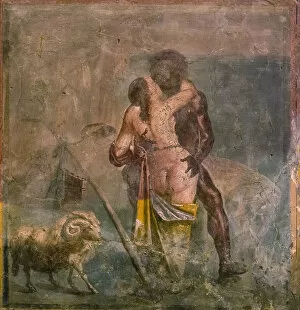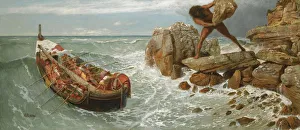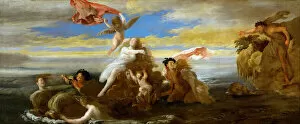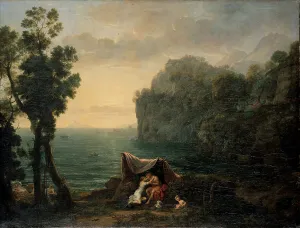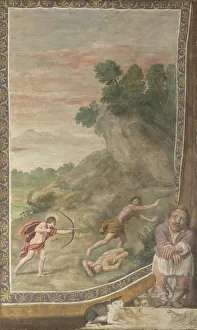Cyclop Collection
"Cyclop: A Mythological Marvel Unveiled in Art" From ancient Greek mythology to the masterpieces of renowned artists
All Professionally Made to Order for Quick Shipping
"Cyclop: A Mythological Marvel Unveiled in Art" From ancient Greek mythology to the masterpieces of renowned artists, the enigmatic figure of Cyclops has captivated our imagination throughout history. In Ulysses deriding Polyphemus, Joseph Mallord William Turner vividly portrays the epic encounter between Ulysses and the giant son of Poseidon, showcasing their fierce struggle for survival. Polyphemus, a colossal creature born from Poseidon's union with Thoosa, continues to inspire artists like Ker-Xavier Roussel in his masterpiece Polyphemus, Acis and Galatea. This captivating artwork delves into the tragic love story between Polyphemus and Galatea as they navigate through forbidden emotions. In Roman-Pompeian wall painting titled Galatea and Polyphemus from the 1st century AD, we witness an ancient depiction of this mythical tale. The vibrant colors bring to life the entangled destinies of these characters amidst a backdrop that transports us back in time. Arnold Bocklin's Odysseus and Polyphemus takes us on a visual journey where cunning meets brute strength. With meticulous detail, Bocklin captures Odysseus' ingenious plan to escape from Cyclops' clutches while highlighting the monstrous features that define this one-eyed beast. The allure of Acis and Galatea is further explored in various artworks such as Lorrain's Landscape with Acis and Galatea. Claude Lorrain skillfully creates a serene landscape where love blossoms despite looming danger – an eternal reminder that even amidst chaos, beauty can thrive. Domenichino's Apollo killing the Cyclops fresco showcases another facet of this mythological creature – its vulnerability against divine power. As Apollo strikes down Cyclops with righteous fury at Villa Aldobrandini, we are reminded that even giants can fall before celestial might.



